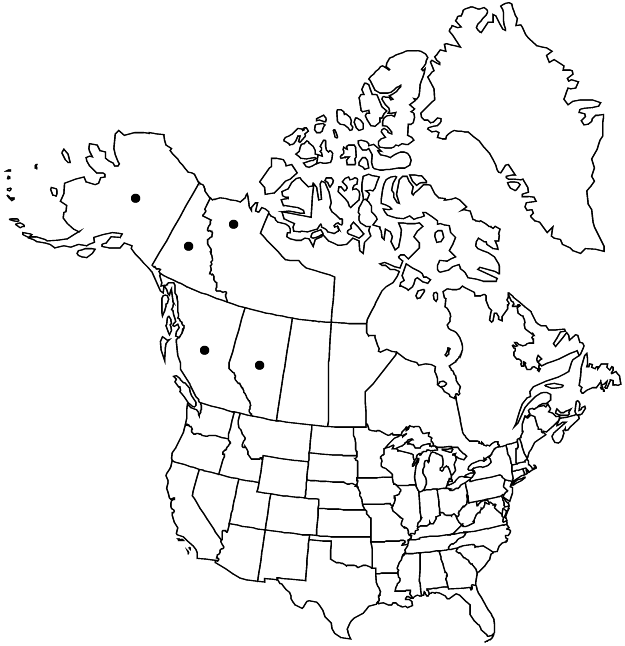Difference between revisions of "Minuartia elegans"
in V. L. Komarov et al., Fl. URSS 6: 508. 1936.
FNA>Volume Importer |
FNA>Volume Importer |
||
| Line 15: | Line 15: | ||
|name=Alsinanthe elegans | |name=Alsinanthe elegans | ||
|authority=(Chamisso & Schlechtendal) Á. Löve & D. Löve | |authority=(Chamisso & Schlechtendal) Á. Löve & D. Löve | ||
| − | }}{{Treatment/ID/Synonym | + | }} {{Treatment/ID/Synonym |
|name=Arenaria rossii subsp. columbiana | |name=Arenaria rossii subsp. columbiana | ||
|authority=(Raup) Maguire | |authority=(Raup) Maguire | ||
| − | }}{{Treatment/ID/Synonym | + | }} {{Treatment/ID/Synonym |
|name=Arenaria rossii var. columbiana | |name=Arenaria rossii var. columbiana | ||
|authority=Raup | |authority=Raup | ||
| − | }}{{Treatment/ID/Synonym | + | }} {{Treatment/ID/Synonym |
|name=Arenaria rossii subsp. elegans | |name=Arenaria rossii subsp. elegans | ||
|authority=(Chamisso & Schlechtendal) Maguire | |authority=(Chamisso & Schlechtendal) Maguire | ||
| − | }}{{Treatment/ID/Synonym | + | }} {{Treatment/ID/Synonym |
|name=Arenaria rossii var. elegans | |name=Arenaria rossii var. elegans | ||
|authority=(Chamisso & Schlechtendal) S. L. Welsh | |authority=(Chamisso & Schlechtendal) S. L. Welsh | ||
| − | }}{{Treatment/ID/Synonym | + | }} {{Treatment/ID/Synonym |
|name=Minuartia rossii subsp. elegans | |name=Minuartia rossii subsp. elegans | ||
|authority=(Chamisso & Schlechtendal) Rebristaya | |authority=(Chamisso & Schlechtendal) Rebristaya | ||
| − | }}{{Treatment/ID/Synonym | + | }} {{Treatment/ID/Synonym |
|name=Minuartia rossii var. elegans | |name=Minuartia rossii var. elegans | ||
|authority=(Chamisso & Schlechtendal) Hultén | |authority=(Chamisso & Schlechtendal) Hultén | ||
| Line 48: | Line 48: | ||
|elevation=0-200 m | |elevation=0-200 m | ||
|distribution=Alta.;B.C.;N.W.T.;Yukon;Alaska;Asia (Russian Far East;e Siberia). | |distribution=Alta.;B.C.;N.W.T.;Yukon;Alaska;Asia (Russian Far East;e Siberia). | ||
| − | |discussion=<p>Minuartia elegans is a part of the M. rossii complex (S. J. Wolf et al. 1979), and is an amphi-Beringian species. The plants are tufted and are known in the flora area only from northwestern Canada and Alaska. Reports from the Pacific Northwest and southern Rocky Mountains likely are referable to M. austromontana.</p> | + | |discussion=<p><i>Minuartia elegans</i> is a part of the <i>M. rossii</i> complex (S. J. Wolf et al. 1979), and is an amphi-Beringian species. The plants are tufted and are known in the flora area only from northwestern Canada and Alaska. Reports from the Pacific Northwest and southern Rocky Mountains likely are referable to <i>M. austromontana</i>.</p> |
|tables= | |tables= | ||
|references= | |references= | ||
| Line 72: | Line 72: | ||
|publication year=1936 | |publication year=1936 | ||
|special status= | |special status= | ||
| − | |source xml=https://jpend@bitbucket.org/aafc-mbb/fna-data-curation.git/src/ | + | |source xml=https://jpend@bitbucket.org/aafc-mbb/fna-data-curation.git/src/8f726806613d60c220dc4493de13607dd3150896/coarse_grained_fna_xml/V5/V5_254.xml |
|subfamily=Caryophyllaceae subfam. Alsinoideae | |subfamily=Caryophyllaceae subfam. Alsinoideae | ||
|genus=Minuartia | |genus=Minuartia | ||
Revision as of 17:37, 18 September 2019
Plants perennial, loosely cespitose. Taproots filiform to slightly thickened. Stems erect to arcuate-ascending, green, commonly purplish, 3–8 cm, glabrous, internodes of all stems 0.2–1.5 times as long as leaves. Leaves tightly overlapping, usually connate proximally, with ± loose, scarious sheath 0.2–0.7 mm; blade ascending to variously curved, green, commonly purplish, flat, prominently 1-veined abaxially, linear to subulate, 3–10 × 1–2 mm, flexuous, margins not thickened, scarious, smooth, apex green to purple, rounded, navicular, shiny, glabrous; axillary leaves present among cauline leaves. Inflorescences solitary flowers, terminal; bracts linear to subulate, herbaceous. Pedicels 1–4 cm, glabrous. Flowers: hypanthium disc-shaped; sepals 3-veined, midrib prominent, lateral veins 1/4–1/2 times as long as sepals, ovate to lanceolate (herbaceous portion ovate to lanceolate), 2–4 mm, not enlarging in fruit, apex often purple, rounded to acute, not hooded, glabrous; petals oblong to obovate, 0.8–1 times as long as sepals, apex rounded, entire, rarely absent. Capsules on stipe ca. 0.2 mm, ellipsoid, 2–4 mm, equaling sepals. Seeds reddish brown, suborbiculate with radicle prolonged into rounded beak, somewhat compressed, 0.6–1 mm, tuberculate; tubercles low, rounded, elongate. 2n = 30, 60.
Phenology: Flowering spring–summer.
Habitat: Rocky talus, montane ridges and meadows, moist tundra
Elevation: 0-200 m
Distribution

Alta., B.C., N.W.T., Yukon, Alaska, Asia (Russian Far East, e Siberia).
Discussion
Minuartia elegans is a part of the M. rossii complex (S. J. Wolf et al. 1979), and is an amphi-Beringian species. The plants are tufted and are known in the flora area only from northwestern Canada and Alaska. Reports from the Pacific Northwest and southern Rocky Mountains likely are referable to M. austromontana.
Selected References
None.